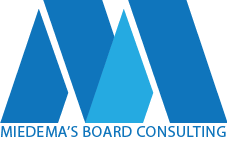I recently attended an Institute of Corporate Directors session about emerging and evolving issues for audit committees. While most of the information was geared to large for-profit corporations, there were some great best-practice ideas that even the smallest nonprofit can implement.
First, external auditors in some countries now have to report on Key Audit Matters (known as KAMs) instead of just providing the standard pass/fail letter that we are used to seeing in Canada. The KAMs are the auditor’s opinion of the matters of risk the auditor viewed as most significant, with an explanation of how they were addressed in the audit. It is meant to enhance the transparency and disclosure of the audit. Even if these new International Auditing and Assurance Standards Board (IAASB) changes are adopted by the Canadian Auditing and Assurance Standards Board (AASB), it is unlikely that they will apply to nonprofits any time in the near future. Even so, nonprofit audit committees could still ask their auditor to comment on these matters in order to gain their perspective on potential issues of risk given that organizational risk assessment is a key area of board responsibility.
Second, the reviews of external audit firms are becoming much more robust. This applies to the annual assessment as well as periodic comprehensive reviews which are recommended every five years. This is part of a global initiative to enhance audit quality. The Public Company Accounting Oversight Board (PCAOB) released a paper in 2015 outlining 28 potential indicators of audit quality. Questions range from the number of years of experience for key engagement partners and audit team members, level of industry experience, partner workload and training hours per professional. While the recommended process might challenge the capacity of some nonprofit audit committees, a regular schedule of annual and comprehensive reviews and a targeted selection of a few key indicators would improve the quality of the external audit process.
Third, corporate audit committees are beginning to engage auditors on matters beyond the audited financial statements. Since the auditors are involved with the underlying systems and processes used to generate the financial statements, the auditor may be in a unique position to provide the audit committee with input on the systems and processes used to generate unaudited supplementary information. Audit committees that leverage their interactions with the auditor will likely have a different perspective on what makes a high quality audit than stakeholders who do not have the same opportunity for interaction with the auditor. This could include hearing the auditor’s opinion of the quality of the audit process, the quality of the financial reporting process and the performance of the senior financial managers.
Even the smallest nonprofits can benefit from implementing a few ideas from their large for-profit counterparts. It is through this process of continuous improvement that the audit committee can help the board ensure ongoing proactive oversight of the organization’s operations and risk.







